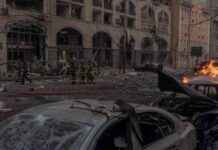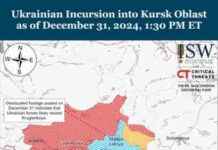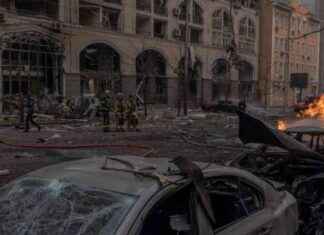Ukraine’s Military Challenges in 2025: Analyzing the Reasons for Losing Ground
In the tumultuous landscape of warfare, where battles are fought not just on the ground but also in the hearts and minds of soldiers and citizens alike, Ukraine finds itself at a critical juncture in 2025. The once formidable force that stood against the might of Russia is now grappling with systemic failures that threaten its very existence. Let’s delve into the heart of these challenges and explore the underlying reasons for Ukraine’s struggle on the battlefield.
The Harsh Realities of Infantry Shortages and Mobilization Setbacks
When Russia first invaded Ukraine, a wave of patriotic fervor swept the nation, leading to a surge in volunteer enlistments. However, as the war dragged on, the tide turned, and the once eager volunteers dwindled. Now, more people are avoiding military service than willingly joining up. This shift reflects a broader historical truth – that major wars often require forced mobilization to meet the demands of the battlefield.
The shortage of combat soldiers in Ukraine is not merely a matter of unwillingness to fight but stems from deep-rooted structural issues. The frontline soldiers, who face the brunt of the conflict, endure unimaginable hardships, from commanders who undervalue their lives to relentless combat with no respite. The toll of infantry combat is not just measured in casualties but in life-altering injuries and psychological trauma that haunt soldiers long after the battle is over.
As the war rages on, the brutal reality of infantry warfare comes to the fore, highlighting the need for a strategic shift in how Ukraine addresses its mobilization setbacks and infantry shortages. The key lies in ensuring that frontline soldiers are adequately supported, both on the battlefield and upon their return, to maintain morale and combat effectiveness.
Structural Failures and Organizational Challenges
Ukraine’s military faces a serious command problem above the brigade level, stemming from decades of downsizing and structural inadequacies. The absence of larger military formations like corps and divisions has left a critical leadership gap, hindering Ukraine’s ability to coordinate large-scale operations effectively. Temporary measures like Operational-Tactical Groups and Operational-Strategic Groups have only exacerbated the situation, creating unstable chains of command and compromising operational integrity.
These organizational failures underscore the urgent need to overhaul Ukraine’s military leadership structure, prioritizing merit over seniority and establishing a framework for objective performance evaluation. By nurturing a new generation of decisive, forward-thinking leaders, Ukraine can bridge the leadership gap and enhance operational effectiveness on the battlefield.
The Perils of False Reporting and Lack of Accountability
Within the ranks of both Ukrainian and Russian militaries, a toxic culture of dishonest reporting pervades, leading to a cascade of misinformation and strategic blunders. Officers, fearing punishment for admitting problems, often resort to deception, painting a rosy picture even as units crumble under pressure. This culture of false reporting not only jeopardizes mission success but also puts soldiers’ lives at risk, leading to needless casualties and mission failures.
The cycle of false reporting and lack of accountability undermines Ukraine’s military effectiveness, creating a bureaucratic nightmare where critical decisions are delayed or avoided altogether. The consequences of this broken system are stark, with soldiers paying the ultimate price for leadership failures and systemic shortcomings.
The West and the Perception of Betrayal
The erosion of Western support and the perception of betrayal have dealt a severe blow to Ukrainian morale and confidence in their allies. What began as a united front against Russian aggression has now devolved into uncertainty and doubt, with Western backing wavering at critical junctures. The failure to deliver vital aid in a timely manner and the specter of peace at any cost have left Ukrainians questioning the true intentions of their allies.
As Ukraine grapples with internal challenges and external pressures, the need for steadfast Western support remains paramount. However, the onus is also on Ukraine’s leadership to demonstrate a commitment to survival and victory, steering the nation through the storm of war with unwavering resolve and strategic clarity.
Conclusion
In the crucible of conflict, where nations are forged and destinies decided, Ukraine stands at a crossroads, grappling with the weight of its military challenges in 2025. The road ahead is fraught with obstacles, from infantry shortages to organizational failures, but the path to victory lies in confronting these issues head-on.
By reforming military leadership, elevating the conditions of frontline infantry, improving the army structure, and transforming the training system, Ukraine can chart a course towards resilience and strength in the face of adversity. The journey will be arduous, the sacrifices great, but the stakes are higher than ever – for Ukraine, for the region, and for the world. As the echoes of battle resound across the Ukrainian landscape, the call to action rings clear: failure is not an option, and victory demands nothing less than unwavering commitment and unyielding resolve.

















